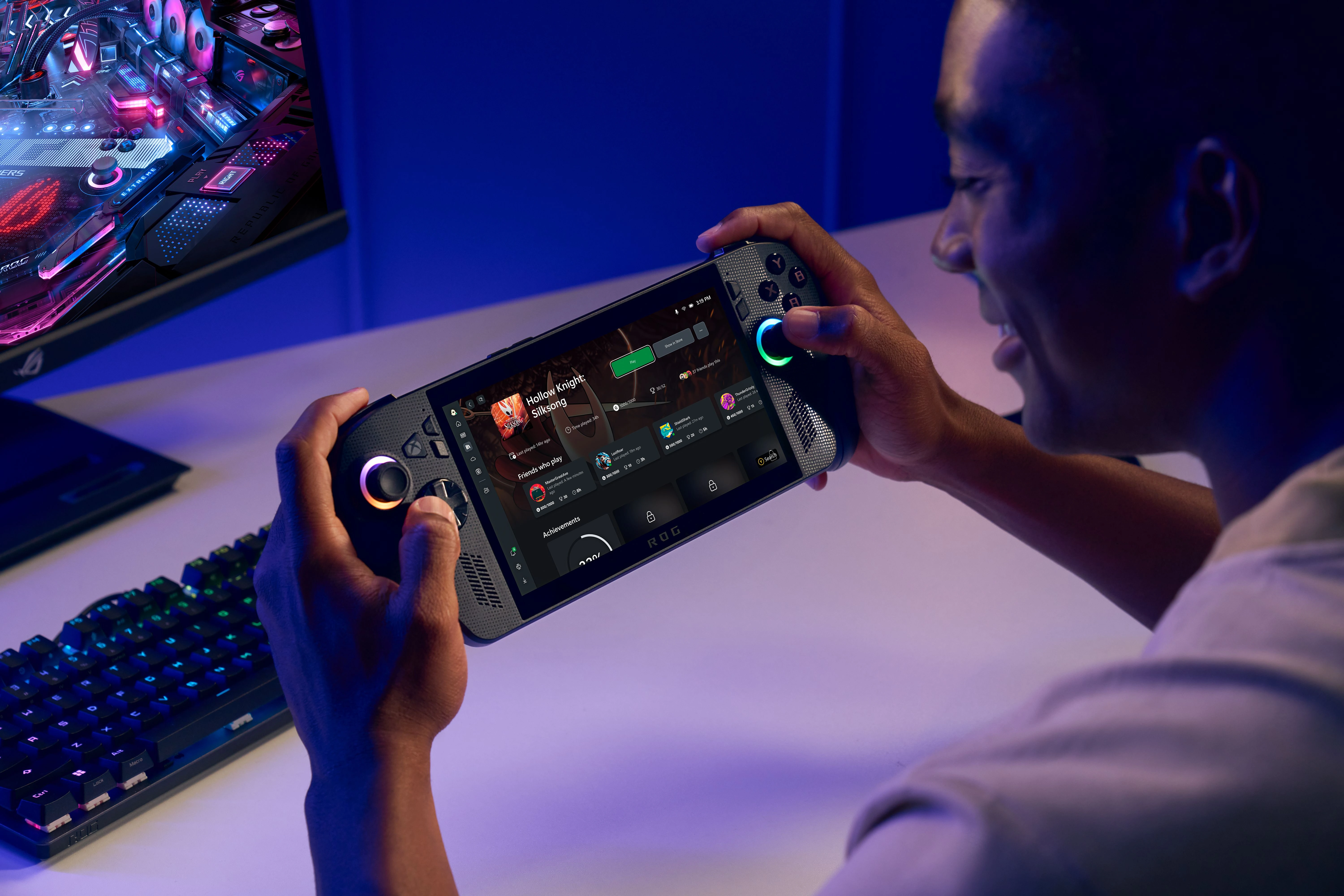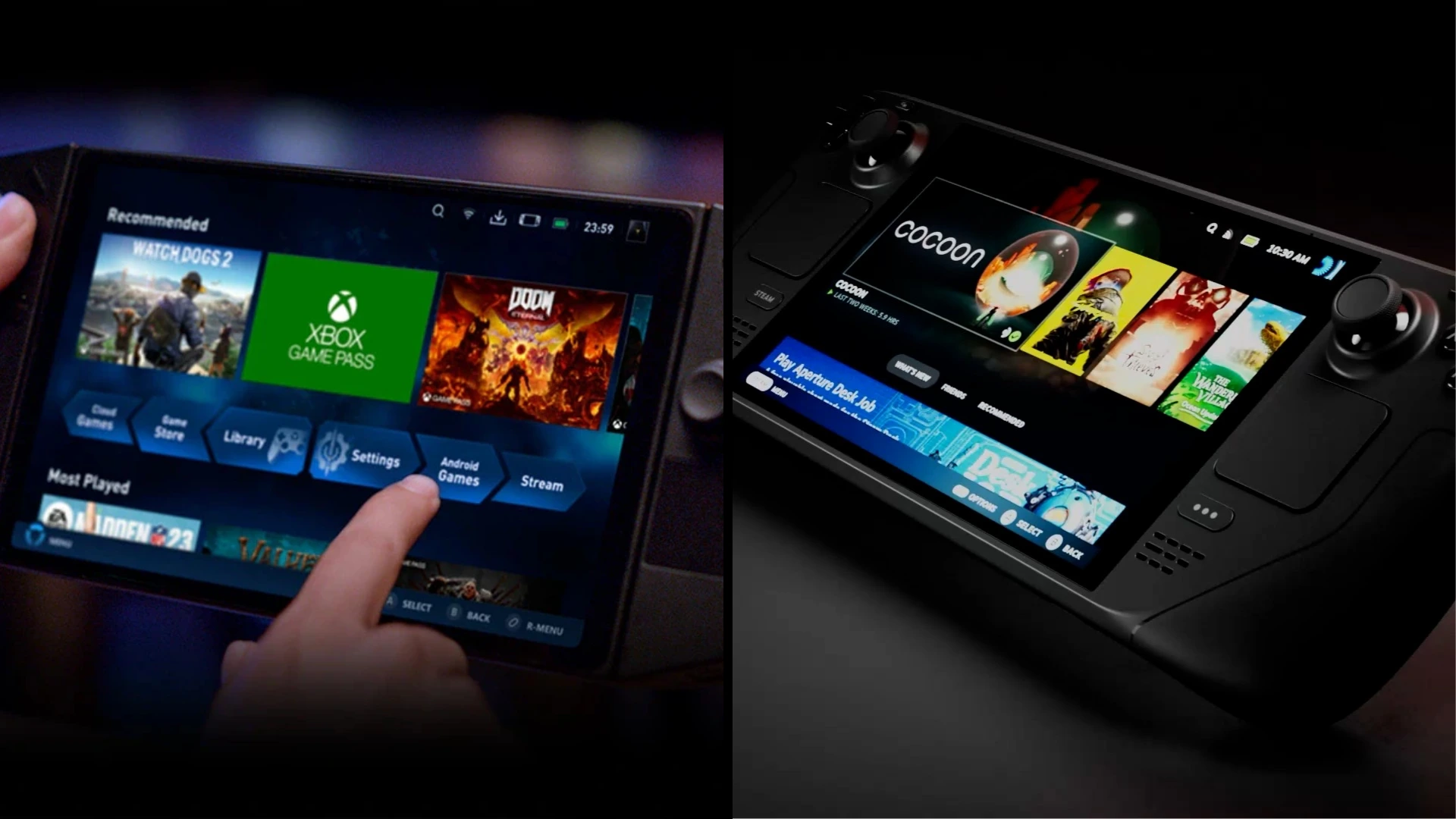
Editor
Celine Low chevron_right
The world of handheld gaming is hotter than ever, with devices like Valve's Steam Deck and ASUS's original ROG Ally proving that powerful PC gaming can fit in your backpack. Now, a new contender is entering the arena, and it comes with a familiar green tint.
On 8 June, Microsoft and Taiwan-based ASUS officially announced the ROG Xbox Ally, marking Microsoft's venture into Xbox-branded handheld gaming device. While it's not a purely "Xbox-branded console" like a mini Xbox, it's a powerful Windows-based handheld gaming PC that features deep Xbox integration and branding. This includes a custom Xbox experience right from boot-up and strong Game Pass support. Microsoft hasn't revealed an official release date, but has suggested that the Xbox Ally X and Ally will launch during the "holiday season" this year.
What is the ROG Xbox Ally?

The ROG Xbox Ally is the latest iteration of ASUS's popular handheld gaming PC line, but with a significant twist: deep integration with the Xbox ecosystem.
Two models have been revealed: the ROG Xbox Ally (featuring an AMD Ryzen™ Z2 A Processor, 16GB RAM, 512GB SSD, and 60Wh battery) and the higher-end ROG Xbox Ally X (boasting the new AMD Ryzen™ AI Z2 Extreme Processor, up to 24GB RAM, 1TB SSD, and a larger 80Wh battery).
The Landscape: How it Compares to Other Handhelds
Versus Console Handhelds (like Nintendo Switch 2 & PlayStation Portal):
The ROG Xbox Ally is fundamentally a powerful PC in handheld form, giving you direct access to a vast library of PC games from various launchers, including Xbox Game Pass. Meanwhile, the Nintendo Switch OLED is a dedicated console with its own exclusive game library and the PlayStation Portal is purely a remote play device tied to your PS5.
Versus the Original ASUS ROG Ally:
The new ROG Xbox Ally addressed the previous criticisms of its predecessor by significantly improving battery life and increasing RAM. The most notable upgrade is the deeper, more seamless Xbox integration right out of the box, offering a more refined and console-like user experience that makes accessing your Xbox games incredibly straightforward.

Versus Valve's Steam Deck:
The Steam Deck runs on the Linux-based SteamOS, offering a highly optimised experience for its Steam library, while the ROG Xbox Ally, running full Windows 11 underneath its Xbox shell, can run any Windows application (not just games). The Ally also boasts a higher resolution (1080p) and faster refresh rate (120Hz) display compared to the Steam Deck's 720p/800p 60Hz screen, providing sharper and smoother visuals.
The Lenovo Legion Go is another Windows-based handheld PC, known for its larger 8.8-inch QHD+ display and detachable controllers.

Rather than just being an ASUS device with an Xbox logo, it seems to be a conscious effort to deliver a truly integrated experience for Xbox fans and Game Pass subscribers. Instead of juggling different launchers, it acts as a central hub for all your PC games. With its improved Xbox interface, direct boot into Game Pass, and potential future handheld optimisations, it clearly signals Microsoft's serious intent to make its gaming ecosystem genuinely portable.
Stay updated with ProductNation on here, Instagram & TikTok as well.
News sources: IGN, Microsoft, ASUS
Read more tech updates and news here:
